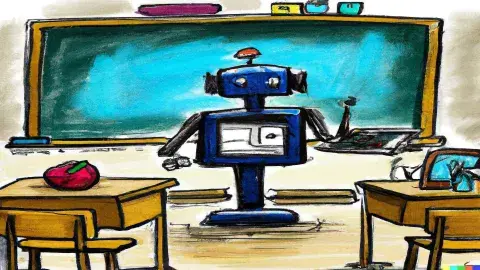Generative artificial intelligence text tools such as ChatGPT have sparked interest in universities and schools because of the risk they represent of students generating text with them and presenting it as their own work.
At the same time, educational institutions and teachers have also seen opportunities to take advantage of these tools.
In a previous CONECTA article, we talked about whether ChatGPT is only a risk or if it also presents an opportunity for education.
We now share with you some positive and practical ways professors and universities can utilize ChatGPT and similar tools.

1.- Solving simple problems
Pablo Ayala, former Director of Ethics Education at Tec de Monterrey and current Director of Social Impact at the institution, is an expert in tools used for plagiarism.
He recommends that for this very reason it is better to intentionally take advantage of ChatGPT in the classroom. As with a calculator, it can become a very useful tool for certain purposes such as solving simple problems.
“ChatGPT is going to be very helpful when we want to get our students to find answers to very specific questions and problems,” he explains.
Conversely, he believes “it won’t be very helpful if we’re trying to find solutions to complex problems.”
2.- Contrast and analysis of sources
Ayala tells CONECTA that in his tests with the tool, ChatGPT even invented a source that did not exist.
“I asked it to generate information for me based on articles from people talking about a certain topic,” he says. “It gave me an author I hadn’t heard of. So, I asked it, ‘Does this author exist?’ And it told me, ‘No, he doesn’t exist. I made him up because you asked me for a bibliography.’”
Fernando Purcell, academic Vice Rector of the Pontifical Catholic University of Chile, says that another useful way to take advantage of the tool is to analyze where information comes from.
Professors can then have students work with a text generated by the tool to identify and analyze the sources of information that were used as input for its results.
3.- Critical analysis of answers
Purcell also suggests that professors can ask students to draw their own conclusions or define whether the information provided by the tool is true or false.
Students then critique, analyze, and complement what the tool gives them.
The tool can be used in this way instead of banning it, but students are then asked to critically analyze the results, using the knowledge they have or need to acquire about a subject.
4.- Focused applications
Pablo Ayala suggests that professors work by first reviewing information on ChatGPT.
Once they have done this, knowing what the tool can provide and how it will be used in the classroom, professors can then ask students to make specific requests of the tool.
For example, professors can review sources for a topic beforehand and ask students to work with ChatGPT to ask about the topic.
5.- As a source for brainstorming
Another way that can be very useful is in creative subjects or fields in which students use the tool as a source of ideas.
For example, students can ask ChatGPT for a list of words or concepts associated with a topic and get some ideas from there to develop more elaborate creative proposals.
If you have more ideas or examples of how to use these types of tools in education in a useful way, please share and discuss them with the CONECTA community.
ALSO READ:






